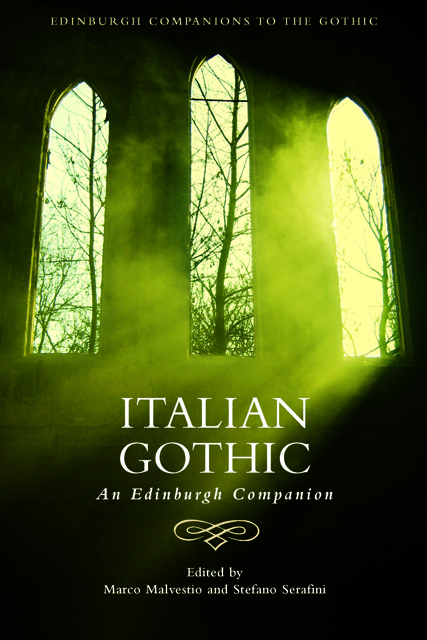5 - The Golden Age of the Gothic: 1957–1979
Published online by Cambridge University Press: 20 October 2023
Summary
The years between 1957 and 1979 marked a dramatic boost of the Gothic within Italian popular culture. First and foremost, this period saw the birth and development of a national Gothic cinema, with some key auteurs standing out, and later of made-for-TV works with fantastique nuances. Moreover, the renewed interest in all things Gothic prompted a renaissance in the literary market, which coincided with the boom of popular publishing. Besides reprints of famous novels and the publication of anthologies collecting the work of noted foreign authors, a massive production of new material by Italian authors ensued, consisting of paper-backs, pulp novels and photo-novels, which allowed the Gothic to circulate among different audiences. Over the course of these two decades the Italian Gothic mutated substantially in response to different socio-cultural changes, from the growing interest in the paranormal to the new-found political awareness prompted by 1968. Moreover, new perspectives in the genre emerged, such as the inclusion of elements of the giallo, while the loosening of censorship resulted in an overemphasis on eroticism.
A Hybrid Founder: I vampiri
The birth of Italian Gothic cinema is commonly associated with the release of Riccardo Freda's I vampiri (1957), a low-budget film produced by Ermanno Donati and Luigi Carpentieri's company Athena Cinematografica with financial assistance from the distributor Titanus. Freda repeatedly claimed that the film was born out of a bet: ‘le cinéma fantastique, c’était le privilège des Américains et des expressionnistes allemands. Je voulais prouver qu’on pouvait faire des films fantastiques en Italie’ [fantastic cinema was the prerogative of the Americans and the German Expressionists. I wanted to prove that we could make fantastic films in Italy] (quoted in Poindron 258).
I vampiri was a novelty of sorts, for audiences were not wholly acquainted with the Gothic tradition, having been kept away from it by ‘decenni di estetica crociana, di storicismo marxista e di moralismo cattolico’ [decades of Crocian aesthetics, Marxist historicism and Catholic moralism] (Pezzotta, ‘Il boom’ 36). Foreign horror and fantastique movies had circulated in the national venues and spectators were familiar with Expressionism, but such works as Nosferatu by Friedrich Wilhelm Murnau (1922) and Vampyr by Carl Theodor Dreyer (1932) did not have a proper distribution and appeared only in festivals and film forums.
- Type
- Chapter
- Information
- Italian GothicAn Edinburgh Companion, pp. 76 - 88Publisher: Edinburgh University PressPrint publication year: 2023



